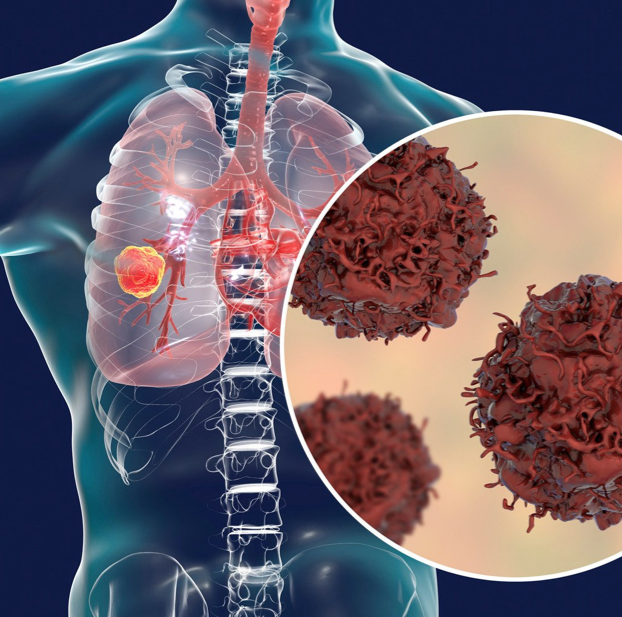- Fast results
- 4,000+ locations
- 4.8 star rating
Need Help? (888) GET LABS



This article is Medically Approved ✓ by Dr. Edward Salko
Cancer, as we know it, affects virtually anyone. However, there are types of cancer more prevalent in men than women. It also works the other way around.
But with male-associated cancer, cases of death are often on the rise.
According to the National Cancer Institute, cancer has a higher mortality rate among men compared to women. There are about 189 cancer-related deaths per 100,000 men.
The most common forms of cancer among men are prostate cancer, lung cancer, and colorectal cancer. They account for about 43% of all cancers diagnosed in men in 2020.
In response to this data, men must understand how these cancers form and how to detect them as early as possible. If you have the same questions in mind, your search ends here as we provide the answers in the following few lines.

According to CDC, 13 out of 100 American men will develop prostate cancer in their lifetime. It is the most common recorded cancer among men.
The prostate is a small gland shaped like a doughnut which is biologically exclusive for men. It is located underneath the bladder and in front of the rectum. Its function is to produce the seminal fluid that allows the nourishment and transport of the sperm cells upon ejaculation.
Prostate cancer occurs when cells within the prostate develop abnormally.
Risk Factors
Old Age: Age is the most common risk factor for Prostate cancer. Men over 50 are at higher risk compared to younger men.
Race: It has also been noted that African-American men have a greater probability of developing aggressive and more advanced prostate cancer.
Others: Genetics and family history can also make you susceptible to prostate cancer along with an unhealthy lifestyle.
There are no definite symptoms of prostate cancer at its onset. The most effective way to detect the condition before it proceeds to an advanced stage is to get tested.
Men at higher risk of developing prostate cancer are advised to see their physician for a prostate exam. The same procedure is recommended for men aged 45 and above.
At its early stages, prostate cancer may appear to be asymptomatic. But when the condition progresses, you can observe the following symptoms:
· Irregular urination
· Erectile dysfunction
· Weak urine flow
· Unexplained weight loss
· Blood in the urine
· Blood in the semen
If you are a man over 45, you must undergo a prostate exam which your doctor will facilitate. The process includes a Digital Rectal Exam (DRE) and some prostate cancer blood tests, including a Prostate-specific Antigen (PSA) Blood Test.
The DRE will detect any enlargement or swelling in the prostate gland. On the other hand, the PSA Blood test will measure PSA levels that are only released if the prostate experiences physiological changes, including malignancy.

Lung cancer is the number one cause of cancer-related deaths among men. This data can be supported by the fact that men are more susceptible to heavy smoking than women.
However, research has shown that lung cancer develops not only among men who smoke but even those who don’t. Non-smoker males are 33% most likely to have lung cancer than female smokers.
This disparity is linked to genetic and environmental factors such as when men are exposed to substances that trigger cancer development, known as carcinogens.
Risk Factors
Old Age: The majority of the people diagnosed with lung cancer are aged 65 and above.
Genetic Disposition: If you have anyone in your family who have had lung cancer despite being a non-smoker, chances are you have a higher risk of developing the condition.
Smoking or Exposure to Smokers: Smoking has long been associated with lung cancer. Even those who do not smoke are vulnerable if they are exposed to second-hand smoke.
Exposure to Carcinogens: Inhalation of chemicals such as asbestos and radon can lead to lung cancer. These substances can be present in the workplace or even at home.
If you have a family history of lung cancer or at high risk of developing the condition, it is recommended that you undergo lung cancer screening. It generally involves a low-dose CAT scan (LDCT) that will provide images of your lungs clear enough to detect abnormalities.
· Recurring cough
· Shortness of breath
· Painful swallowing
· Hoarseness
· Chest pain
· Blood in the mucus
· Wheezing
· Fatigue
· Unexplained weight loss
In diagnosing lung cancer, an imaging procedure is mainly performed, such as X-ray and the widely used LDCT.
When symptoms are already present, and the condition only requires a confirmatory test, doctors require a biopsy. In this procedure, a tissue sample is collected and screened for malignant cells.
Another way to detect cancer cells is by evaluating sputum or respiratory mucus for traces of abnormal cells.

1 in 23 men is most likely to develop colorectal cancer in their lifetime. This form of cancer affects the colon, also known as the large intestine and the rectum. Both parts are found in the digestive tract.
Sometimes cancer begins with the formation of noncancerous clumps of cells known as polyps. These polyps may turn into malignant tissues.
Old Age: Most of the people diagnosed with colorectal cancer are aged 50 and above.
Race: Records have shown that African American men are more susceptible to developing colorectal cancer than other races.
Genetic Disposition: People who have a family history of colorectal cancer are more likely to have cancer in their lifetime. In the same way, family history of syndromes and medical conditions known to trigger colon cancer are also vulnerable to the disease. Some of these conditions include Lynch syndrome and familial adenomatous polyposis (FAP).
Poor Diet: The colorectal region of the digestive tract decreases its functionality with diet consisting of high fat and low fiber. Research has also shown the consumption of red meat and processed food increases the risk for colorectal cancer.
Existing Diseases: Several diseases such as diabetes, Crohn’s disease, and ulcerative colitis are susceptible to colorectal cancer.
Unhealthy Lifestyle: People who regularly smoke, drink alcohol heavily, and have low activity are reported to develop colorectal cancer more than those who have a healthy lifestyle.
Screening for colorectal cancer can be performed on those who have a high risk for the condition. The screening may involve colonoscopy, sigmoidoscopy, fecal occult blood test, CEA blood test, double contrast barium enema (DCBE), and other colon cancer tests. Detection and removal of noncancerous polyps is a preventive measure against colorectal cancer.
Colorectal cancer has no specific symptoms at its early stage. However, as cancer progresses, the following symptoms may appear.
· Inconsistent bowel habits
· Blood in the stool
· Recurring abdominal discomfort
· Fatigue
· Unexplained weight loss
Colonoscopy: In this procedure, a long, narrow, flexible tube called a colonoscope is inserted into your colon through the rectum. It has a tiny camera and light that takes images of the insides of your entire colon. The photos provide a clear view of any abnormal growth in your colon.
Sigmoidoscopy: This process is precisely the same as colonoscopy. It only differs on the part to which the tube explores. Colonoscopy takes images of the entire colon, while sigmoidoscopy focuses on the lower part of the colon, also known as the sigmoid and the rectal area.
Fecal Occult Blood Test: This test uncovers any blood in the stool which is not visible to the naked eye.
Double contrast barium enema (DCBE): To get a picture of your colorectal region, DCBE uses x-rays by inserting barium into the colon to provide a more detailed image of the colorectal lining.
CEA blood test: This test is designed as a tumor marker in diagnosing colorectal cancer and even other forms of cancers.
These three types of cancers in men can be prevented or managed towards recovery with early detection.
The best way to catch cancer while it’s still in its early stage is to know whether or not you’re at high risk.
Suppose you find out that you are susceptible to the disease, schedule a screening for cancer. Always be aware of any changes in your body.
Keep a healthy lifestyle and stay away from cancer-causing substances.
If you have a family history of cancer, it is best to get tested to measure abnormal tumor markers in your body.

© Copyright 2025 Personalabs. All Rights Reserved.